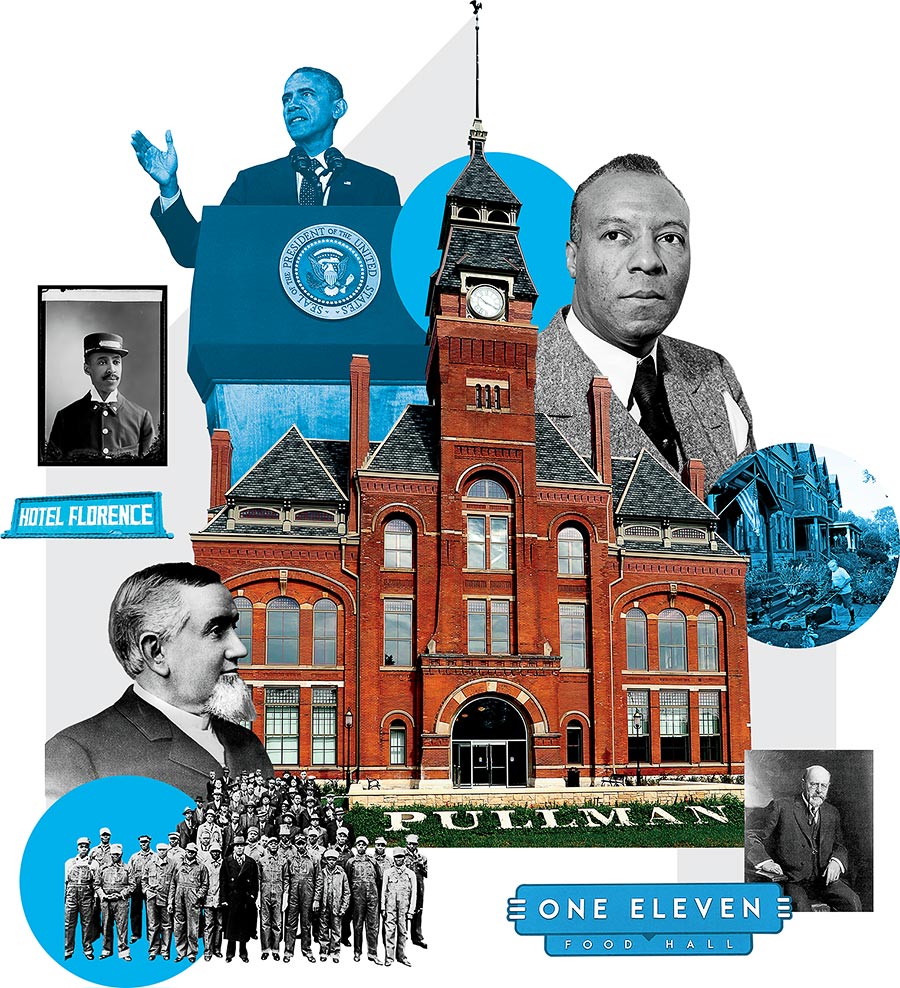My late father loved this city’s architecture and history. The Pullman neighborhood, a 10-minute drive from our Calumet Heights home, offered a perfect combination of those passions.
We’d brunch at the Hotel Florence, a stately time capsule full of original furnishings at 111th Street and Forrestville Avenue that was named for the favorite daughter of town founder and passenger railcar entrepreneur George Pullman. Walking tours past red brick row houses transported us back to the 1880s in what was arguably the nation’s most significant planned industrial city — a town for Pullman Palace Car Company employees.
The Hotel Florence closed in 2000. While there was talk of honoring Pullman’s significance in the American labor and civil rights movements, it was considered another underresourced Far South Side neighborhood.
That changed in 2015, when President Barack Obama proclaimed Pullman a national historic district. On Labor Day 2021, the Pullman National Monument celebrated the opening of its visitor center, becoming Chicago’s only national monument. Here’s what to explore when you go.
The Monument
The Pullman National Monument incorporates all buildings in the area bounded by 103rd and 115th Streets, Cottage Grove Avenue, and the Bishop Ford Freeway. Besides the visitor center, the monument includes the Hotel Florence, Pullman Wheelworks Apartments, Market Hall, Engine Company 80 Firehouse, National A. Philip Randolph Pullman Porter Museum, workers’ homes, Greenstone United Methodist Church, Arcade Park, and Pullman Exhibit Hall.
The Visitor Center
George Pullman enlisted famed architect Solon Spencer Beman and landscape architect Nathan F. Barrett to design Pullman’s public spaces, including the administration building and its sprawling railroad-themed campus. Workers were recently seen completing renovations on the buildings and planting spring bulbs around the grounds. 11001 S. Cottage Grove Ave. Open 9 a.m. to 5 p.m. every day except Thanksgiving, Christmas, and New Year’s. nps.gov/pull
Not Your Father’s Museum
The visitor center’s interactive exhibit outlines the impact of the company and the town’s history, but does not make a hero of George Pullman. It poses tough questions about his controlling and paternalistic attitude toward town employees and the “company first” policies that led to the infamous 1894 labor strike, when he cut wages but refused to lower rent. The creation of Labor Day as a federal holiday was among the outcomes of the violent strike.
The Brotherhood of Sleeping Car Porters
A. Philip Randolph and the all–African American Pullman porters are a rich part of the Visitor Center experience. By the 1930s, the company was the nation’s largest employer of African Americans. Pullman porters were known for impeccable passenger service. Randolph founded the Brotherhood of Sleeping Car Porters, brokering the first major labor agreement between a Black-led union and a corporation.
Other Highlights
The nearby Ryerson steel plant site has been developed into a retail complex anchored by Walmart and including the South Side’s first food hall, One Eleven Food Hall, 756 E. 111th St., featuring vegan cuisine from Majani and ribs from Lexington Betty Smoke House. A Black-owned Culver’s at 11051 S. Doty Ave., just off the Bishop Ford, is bringing jobs to the neighborhood. The $20 million Pullman Community Center, a multisport complex, opened in 2018 at 10355 South Woodlawn Avenue.




